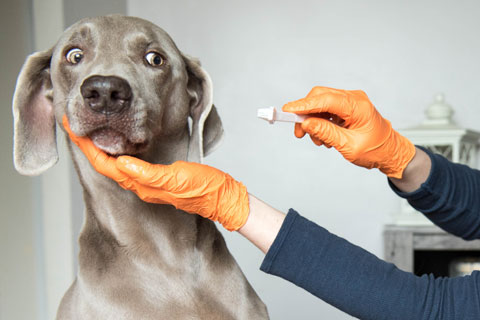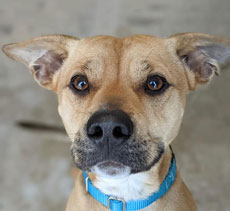Should pets have their teeth cleaned without anesthesia?
Most pets at some time in their life will develop plaque deposition on their teeth and associated gingivitis. Many pets will further develop periodontal disease, which is the loss of tooth attachment. Some pets will develop dental abscesses and or cavitation’s on the surface of a tooth.
As veterinarians, we identify these types of dental conditions in our patients every day of practice. Most clients want to provide dental care for their pets, but are concerned about the need for anesthesia. Unfortunately, professional level periodontal therapy must be completed under general anesthesia.
Studies show that dental procedures done with sedation or with non-anesthetic options have little to no medical benefit. General anesthesia is needed to complete a safe thorough cleaning as well as a thorough oral exam. Dental work done any other way is cosmetic at best and deleterious to the patient’s welfare at worst. In fact when dental procedures are completed without anesthesia it hastens the progression of periodontal disease.
In order to complete a beneficial and thorough cleaning, the space under the edge of the gum must be cleaned; and the tooth must be cleaned 360 degrees around. Further, periodontal probing for pockets and dental radiology are needed for a complete exam.
In dental procedures using sedation only or no anesthetic, it is not possible to clean the entire tooth; especially the sub-gingival space and the inner surface of the tooth. Without proper probing for pockets and dental X-ray most dental pathology will be missed.
Commonly, oral cavity exams on awake patients, grossly underestimate the amount of dental disease that is present in the patient. Dental X-ray, probing, and seeing the entire oral cavity often reveals root abscesses, gingival growths, and moderate to severe periodontal disease. Once identified these conditions can be treated. In fact, one recent study showed that patients receiving dental evaluation and cleaning under general anesthesia live longer than patients that do not receive this treatment.
To further support dentistry under general anesthesia versus “non-anesthetic dentistry”; several veterinary bodies have come out with position statements against dentistry without anesthesia. And some states have made the practice of dentistry illegal outside of a veterinary hospital.
In regard to anesthesia risks, a decision is usually made between the veterinarian and the pet owner based on health of the patient, blood work on the patient, and records of previous anesthetic events. In veterinary hospitals with “best practices” the risk with anesthesia is extremely low.
The reason for the low risk with anesthesia is related to good drug choices for each patient; along with proper supportive care during the procedure, and extremely thorough monitoring of vitals during the procedure.
When patients are screened carefully, anesthetic protocols are customized to the patient, and monitoring is detailed and exquisite; patient outcomes are excellent. There is a clear health benefit to keeping the oral cavity in top condition. It is advised to have a conversation with you veterinary professional about dental procedures, along with the risks and benefits for your pet.
Because my pets are Maltese, they have benefited from perio-therapy every year and have always done well!!




 WSHS can accept credit-card donations online using a secure server. Click on the Donate Now button. You can choose how your donation will be used! All donations are tax deductible.
WSHS can accept credit-card donations online using a secure server. Click on the Donate Now button. You can choose how your donation will be used! All donations are tax deductible.